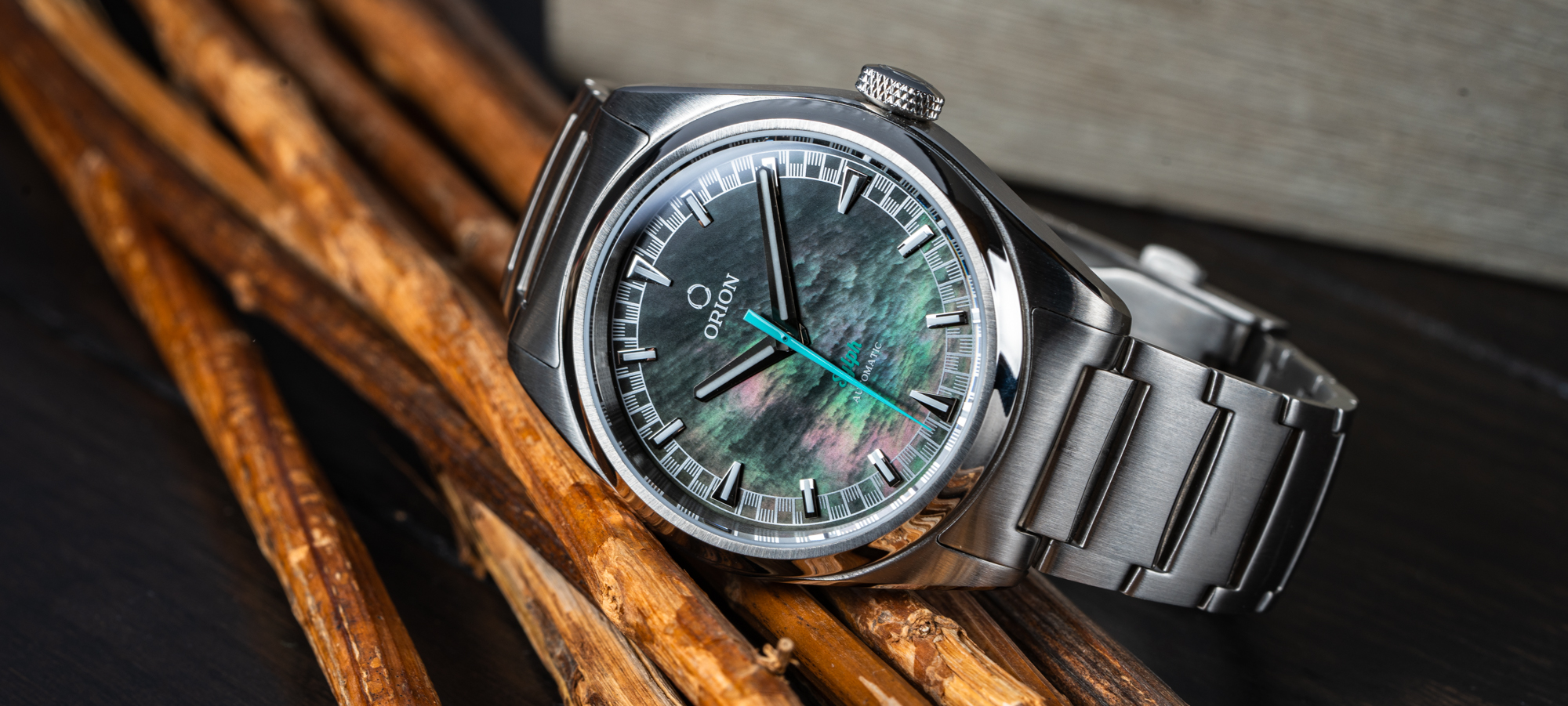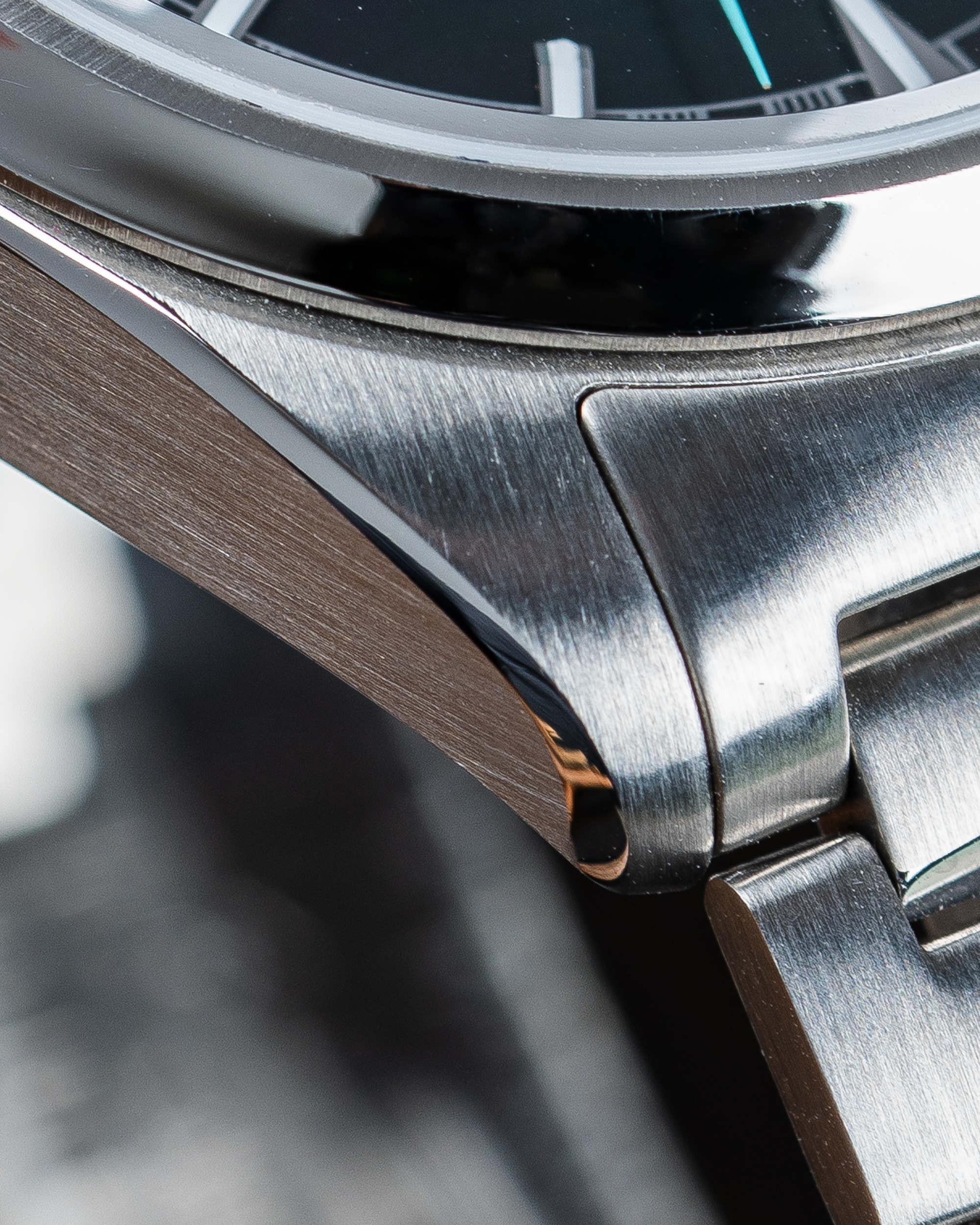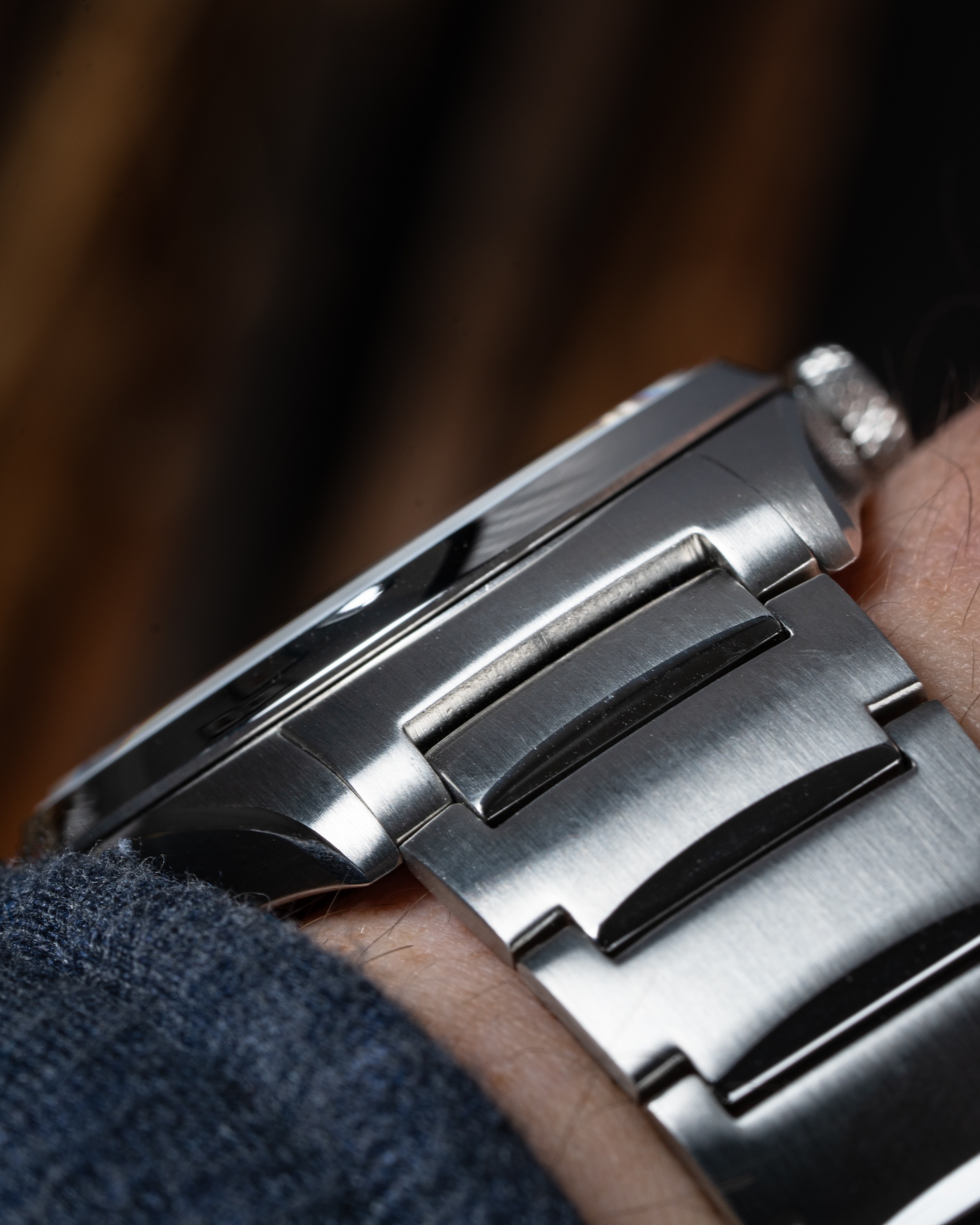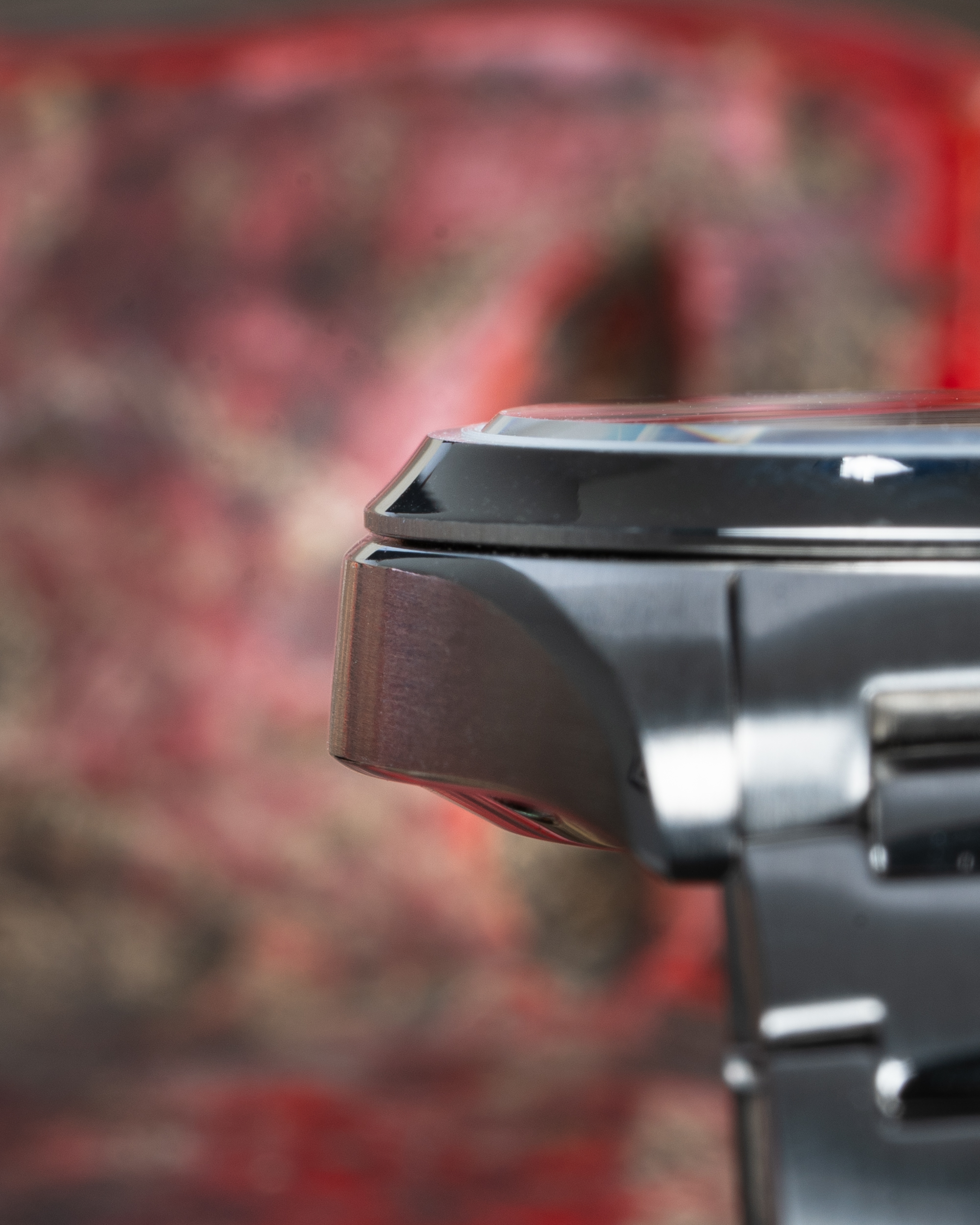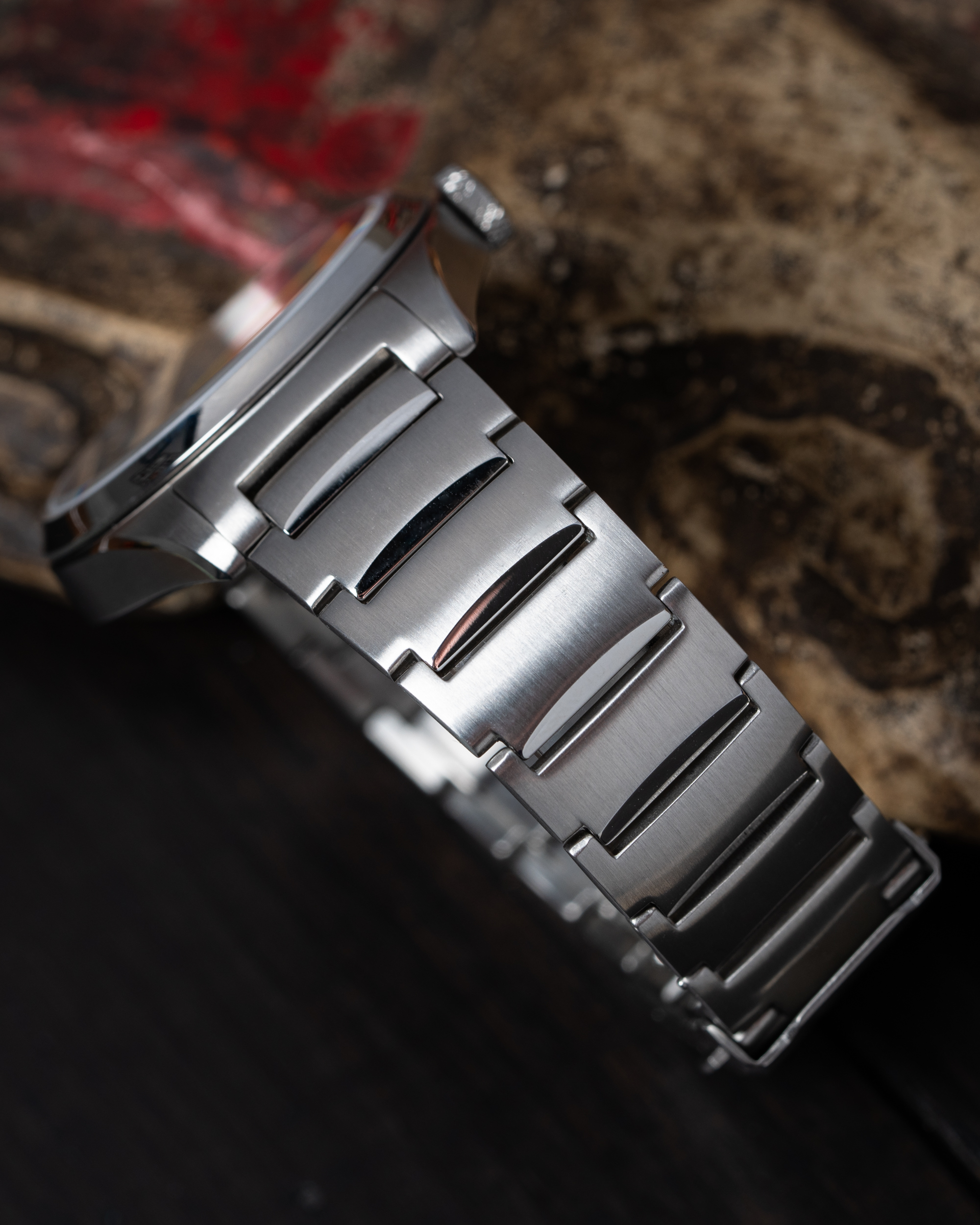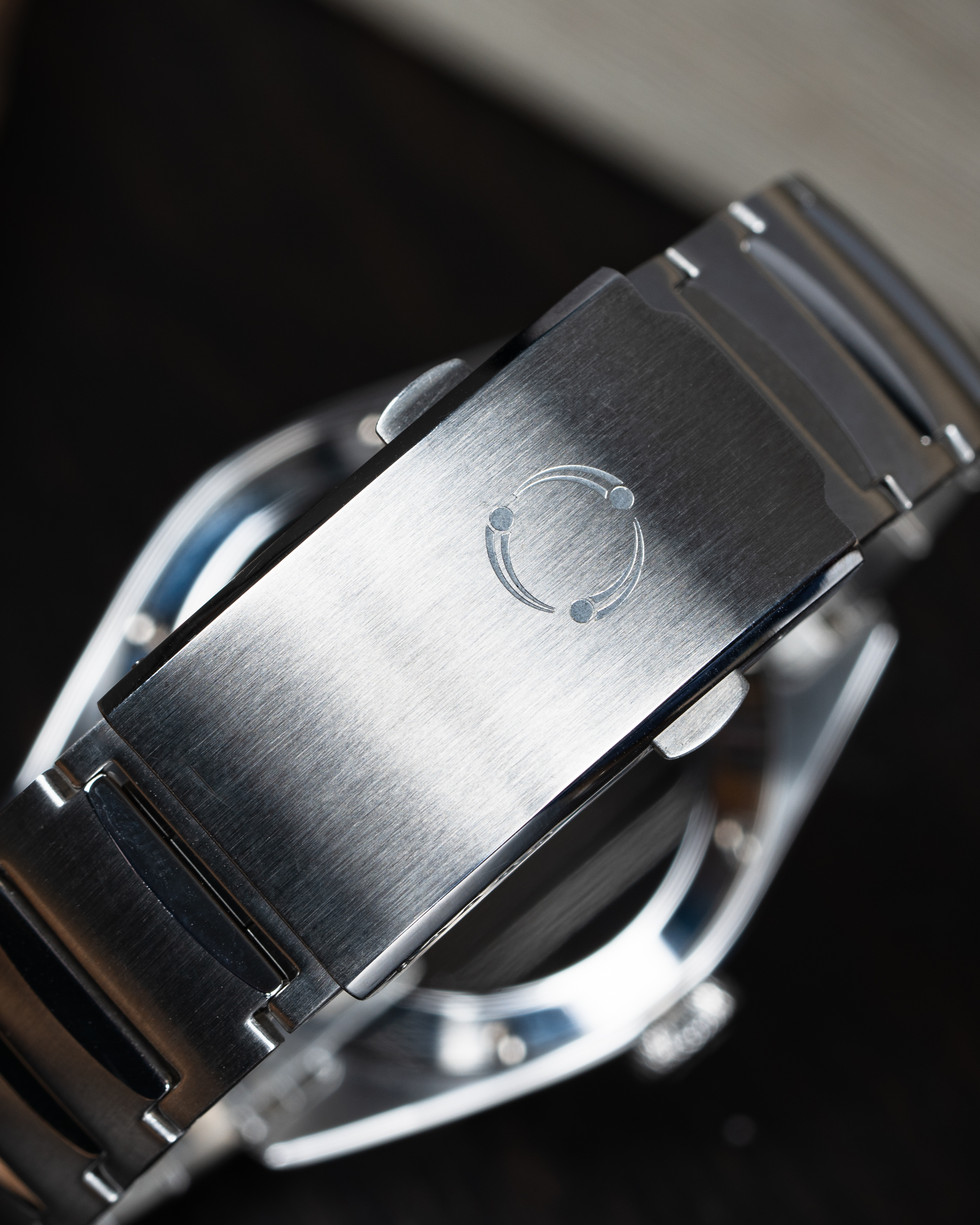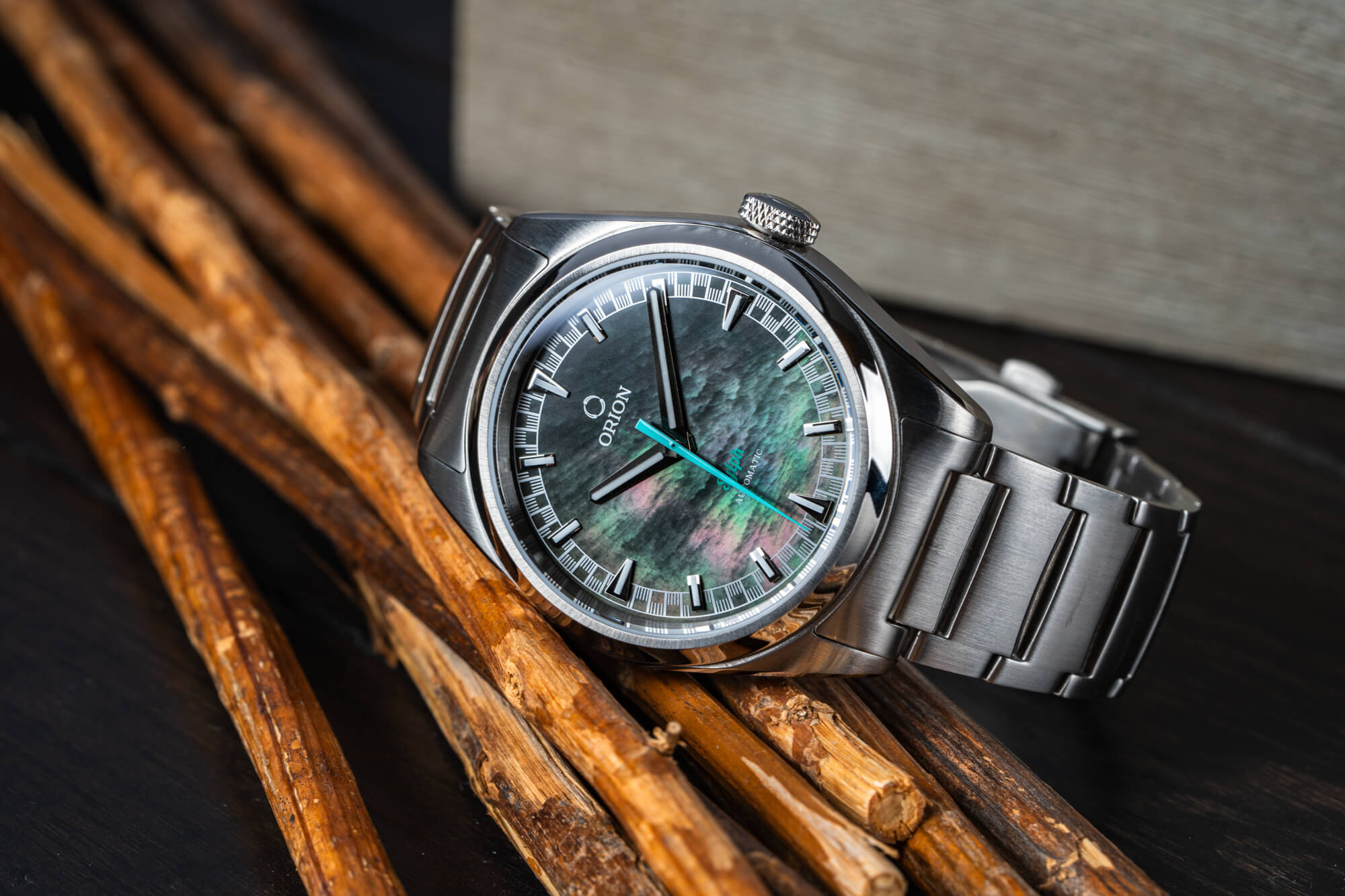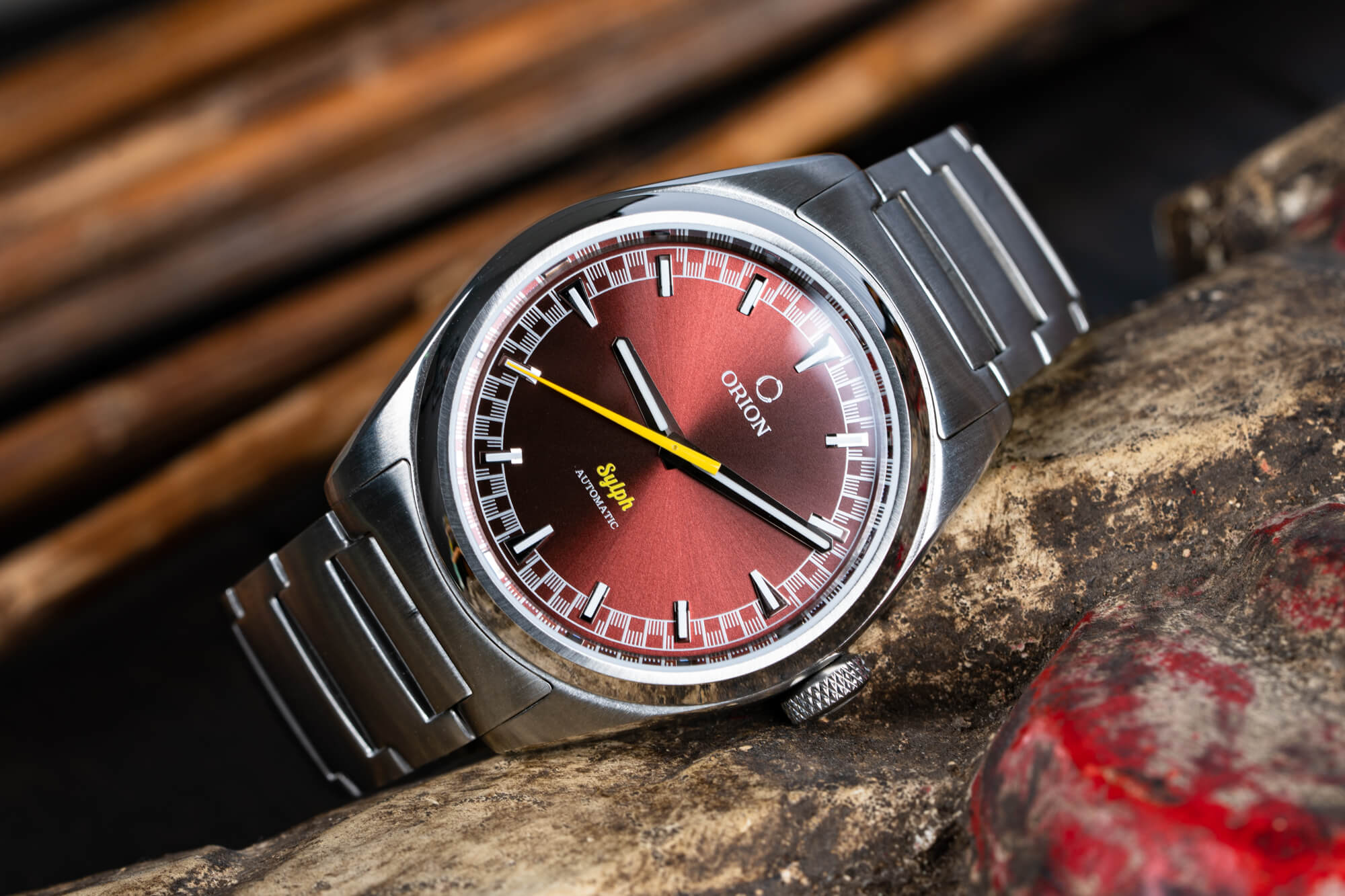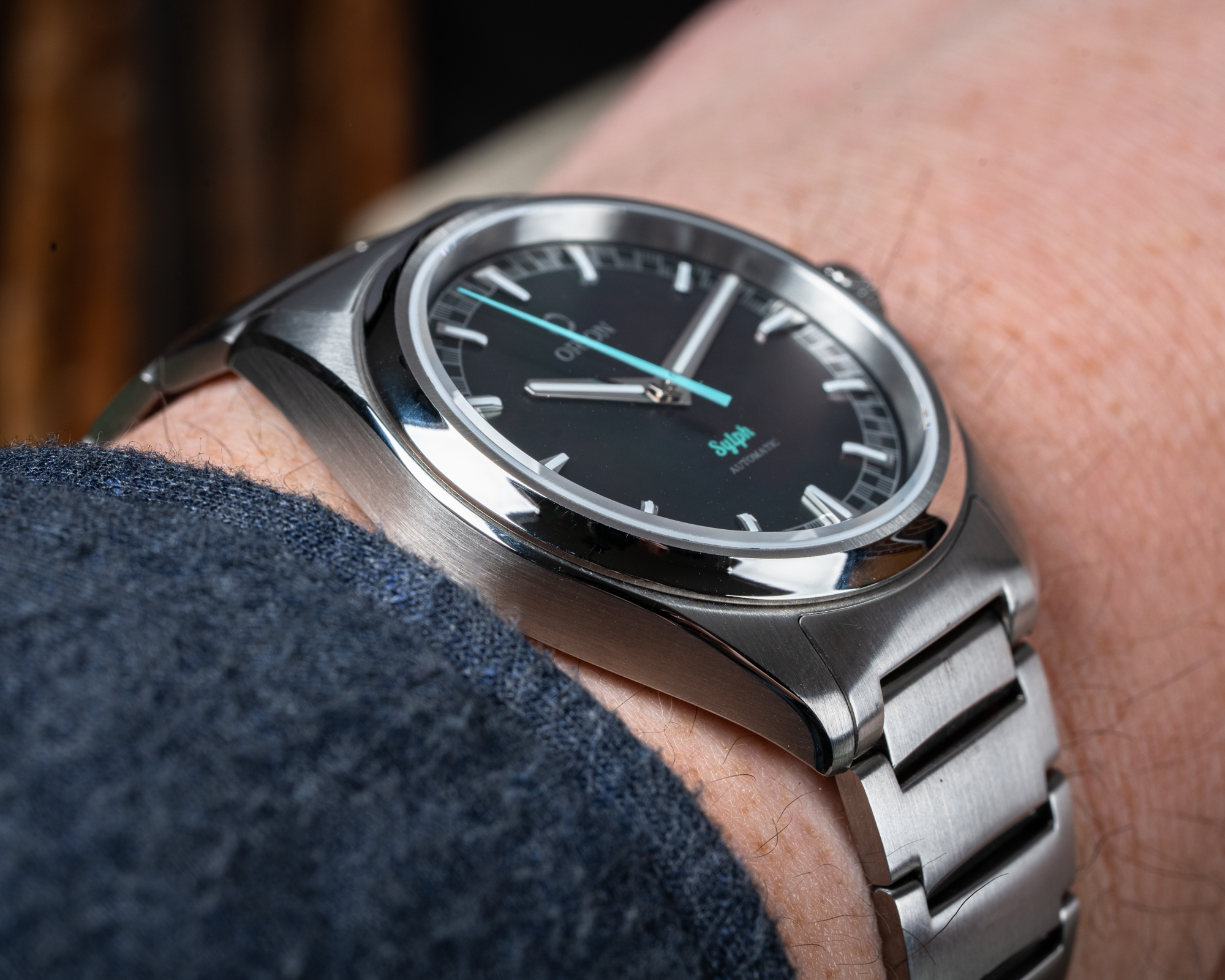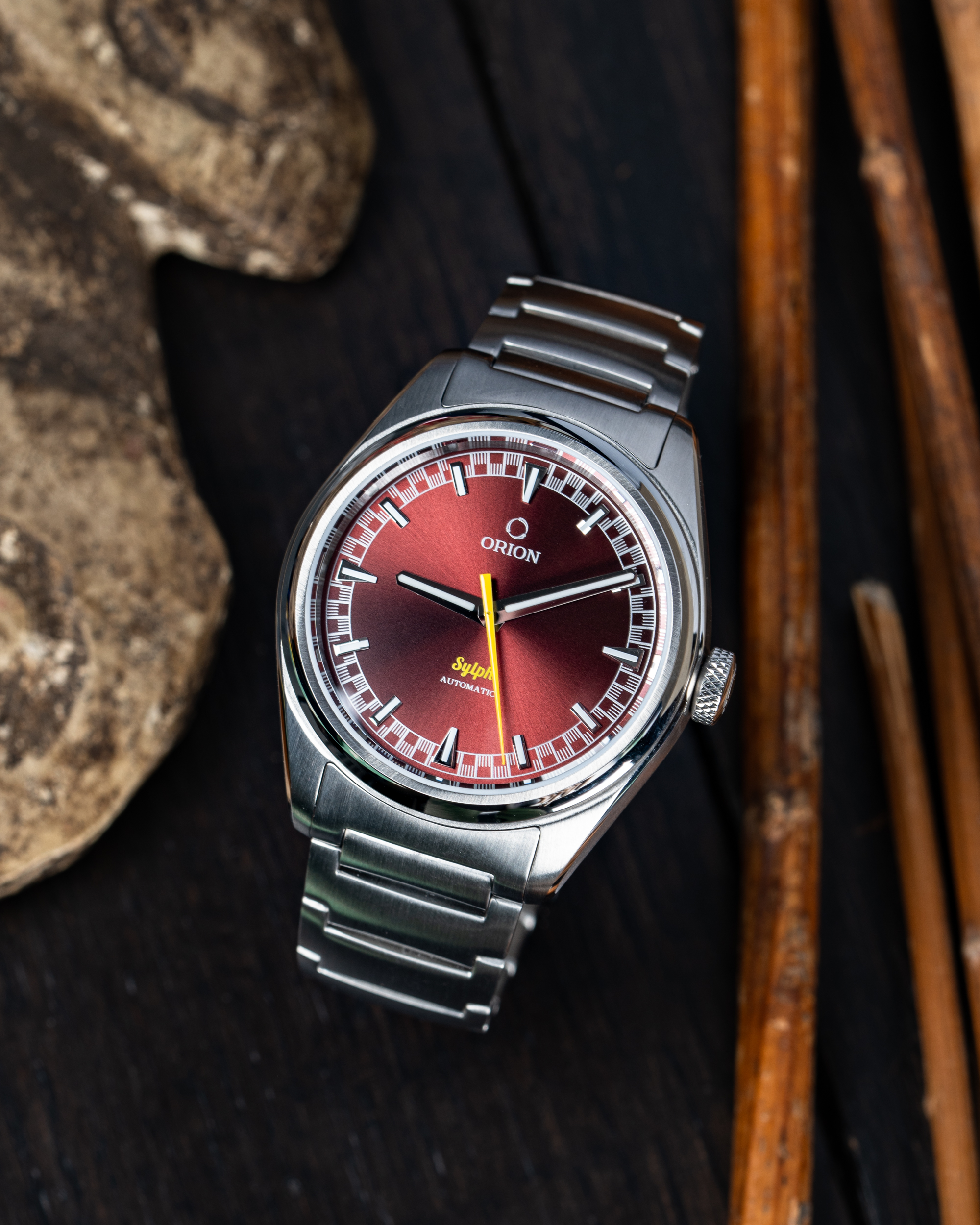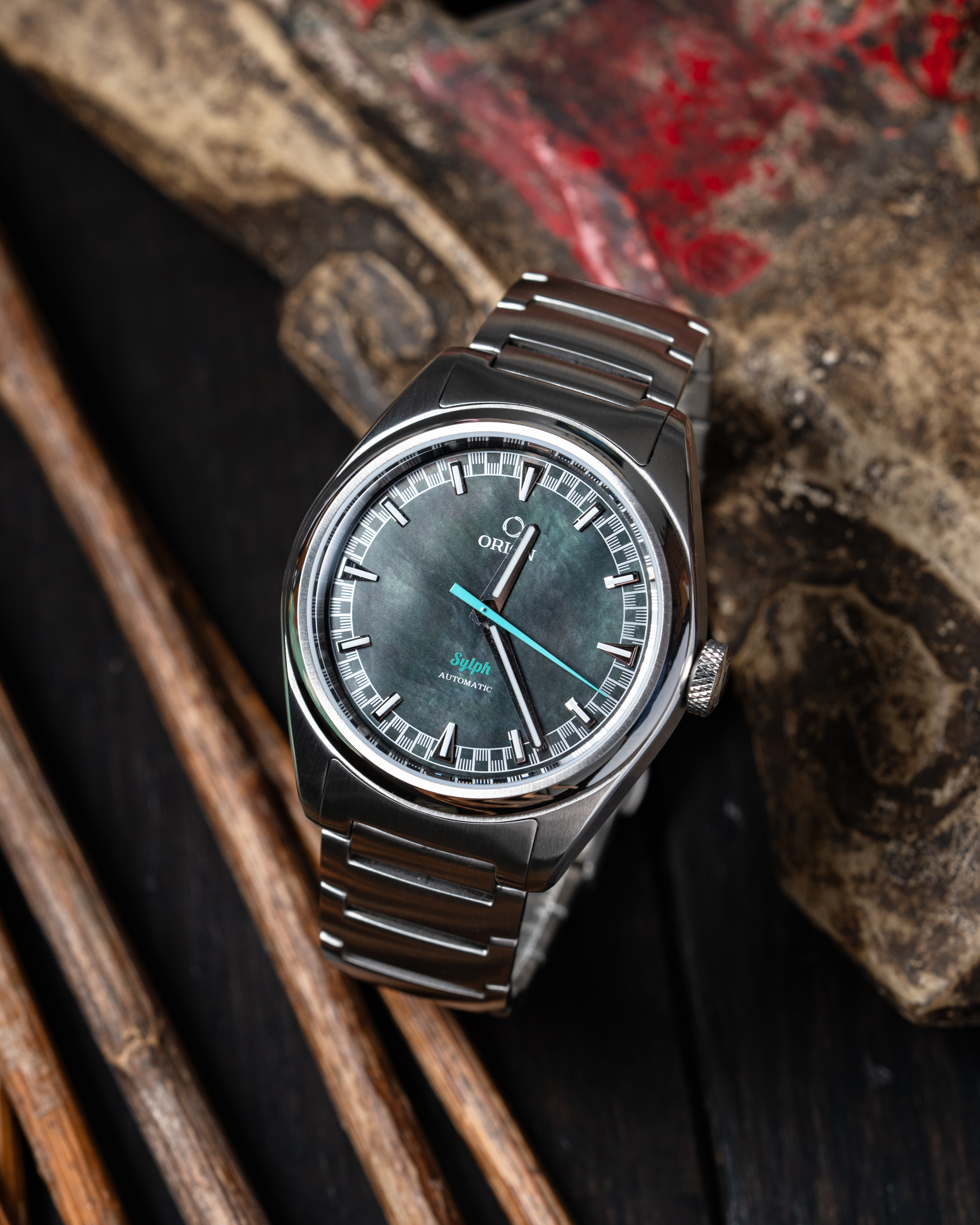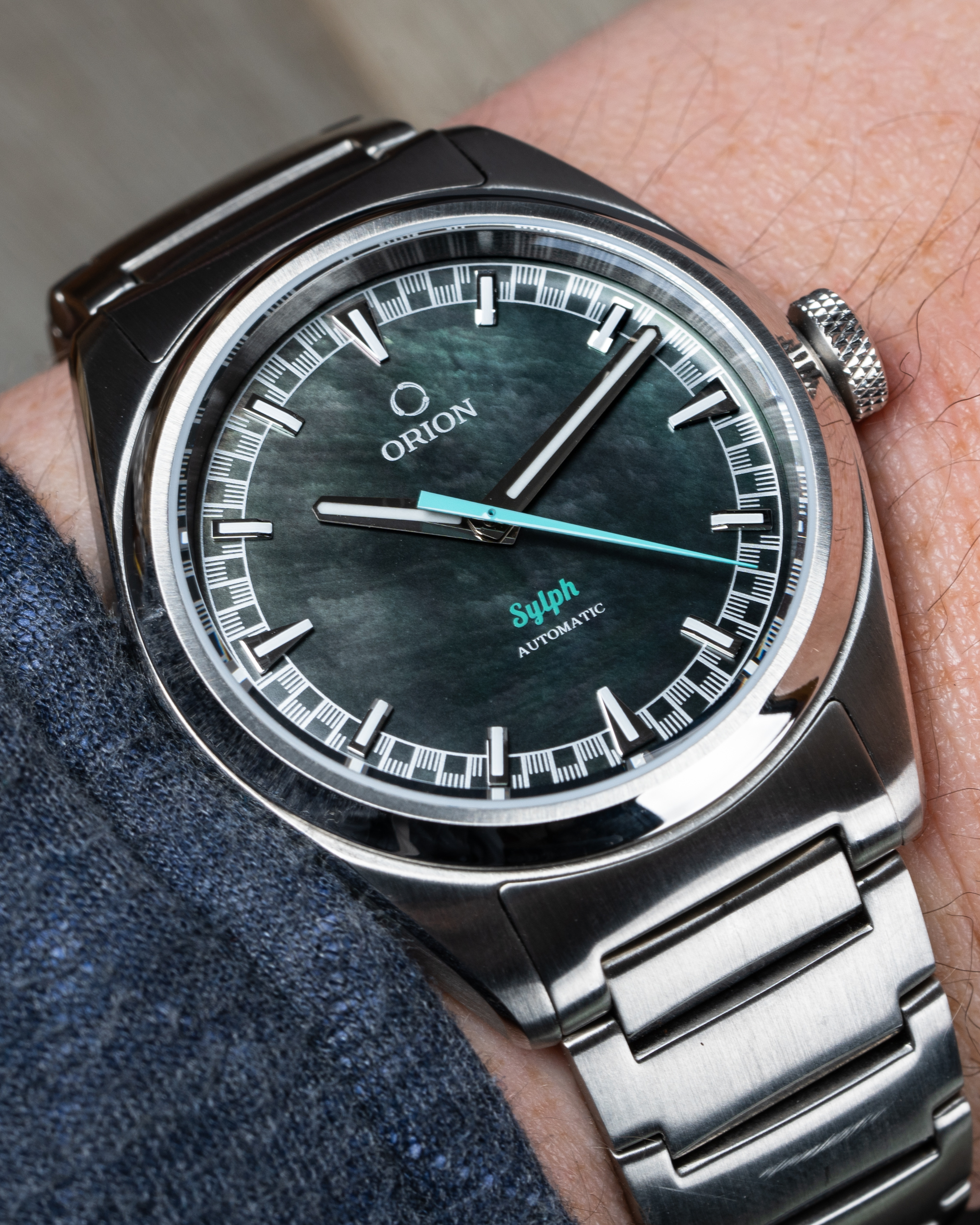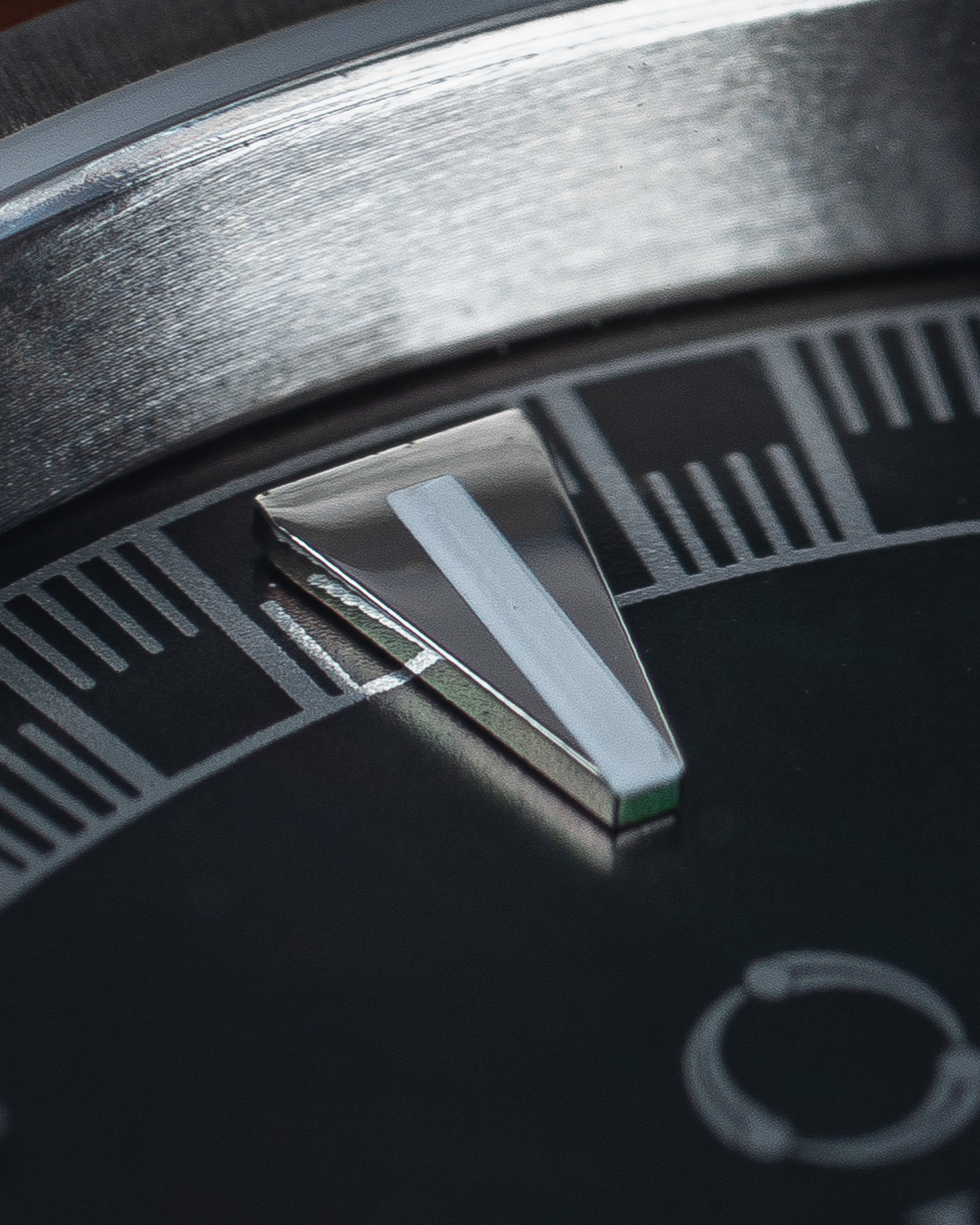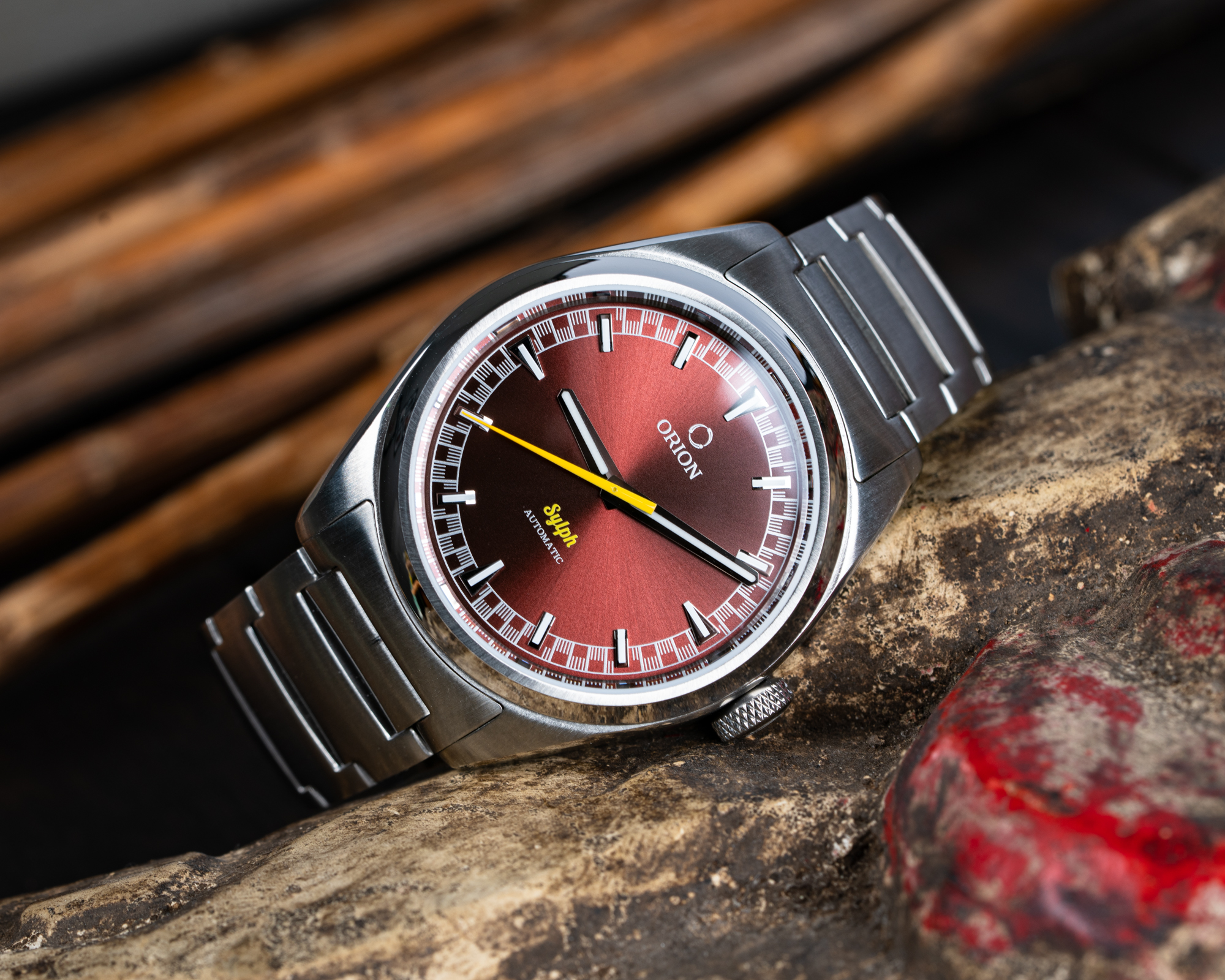
Owned by a trained watchmaker, Orion Watches has always strived to make beautiful, wearable timepieces that don’t break the bank. That probably sounds familiar, because it could be the mantra for almost every microbrand out there. The problem is that most small brands end up focusing on beauty or wearability, and sometimes end up delivering neither. Orion seems to have found the balance and has consistently delivered both. The Orion Sylph is no exception, building on the brand’s curved-back Hellcat platform and punching the dial way up.
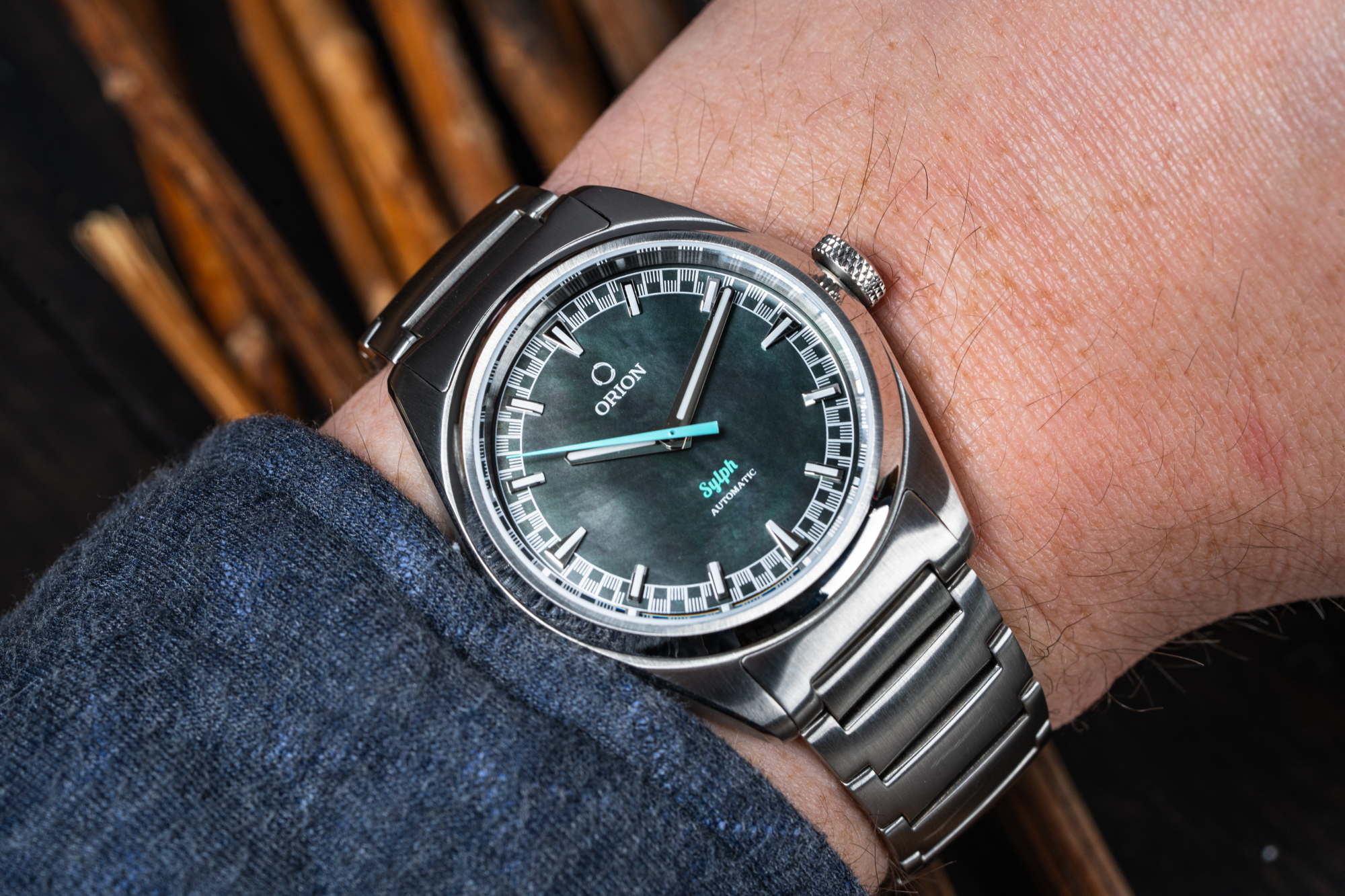
Sometimes, brands hit on a case that works so well that the brand goes ahead and expands its use, creating a platform on which to build a number of different models (another great example is the Nodus Sector). That’s exactly what Orion has done with its Hellcat platform, which has been used on Hellcat, Sylph, Field Standard II, and Tesseract models. Measuring 39mm in diameter, the Orion Sylph has a lug-to-lug of 47mm and is just 10.5mm thick, but that thickness comes with an asterisk: As with all modern offerings from Orion, it has a curved caseback. In early models, Orion achieved its cozy wrist hug with incredibly long, dramatically curved lugs; it was actually in this earlier case that the Sylph made its debut with the burgundy dial and yellow seconds hand. Since the Calamity dive watch, every model has had a curved caseback, which helps achieve a similarly close fit without taking up as much wrist real estate. The result is one of the best-wearing watches I’ve experienced, especially at this price point.
Beyond the incredible wearability, there are tons of tiny details that push this watch along toward something better than you’d expect. These are the kinds of details that you usually won’t notice at first glance, and almost certainly not from a quick perusal of photos. The first few pertain to the case itself. A concave bezel gives the watch an air of haute horlogerie (high-end brands like Moser use these), and while it’s almost entirely aesthetic, it does make the case feel a touch slimmer and reduces the bezel’s exposure to scratches. The next is the midcase and its finishing. First, the 100m WR case actually expands as it drops to the wrist, eliminating the dreaded slab-side profile that makes watches wear too stout. Second, the brushed and polished finishing and the transitions between them, are quite crisp, with clear definitions between each surface.
Finally, we get to the bracelet, which features a Y-link design with polished scallops on the lower end of each link. The bracelet articulates well for a comfortable fit on the wrist, but the lack of a quick-adjust clasp and quick-release keep it lagging behind many of its peers, and the extremely tight tolerances upon which the brand insists mean changing the bracelet requires spring bar tweezers. So tight are the tolerances that I simply gave up trying to see how this might look on other straps. Having reviewed other watches that use the Hellcat platform, though, I can say with confidence that if you get the bracelet off (Orion offers a video tutorial on using spring bar tweezers the right way), you’ll have no issue pairing 20mm straps.
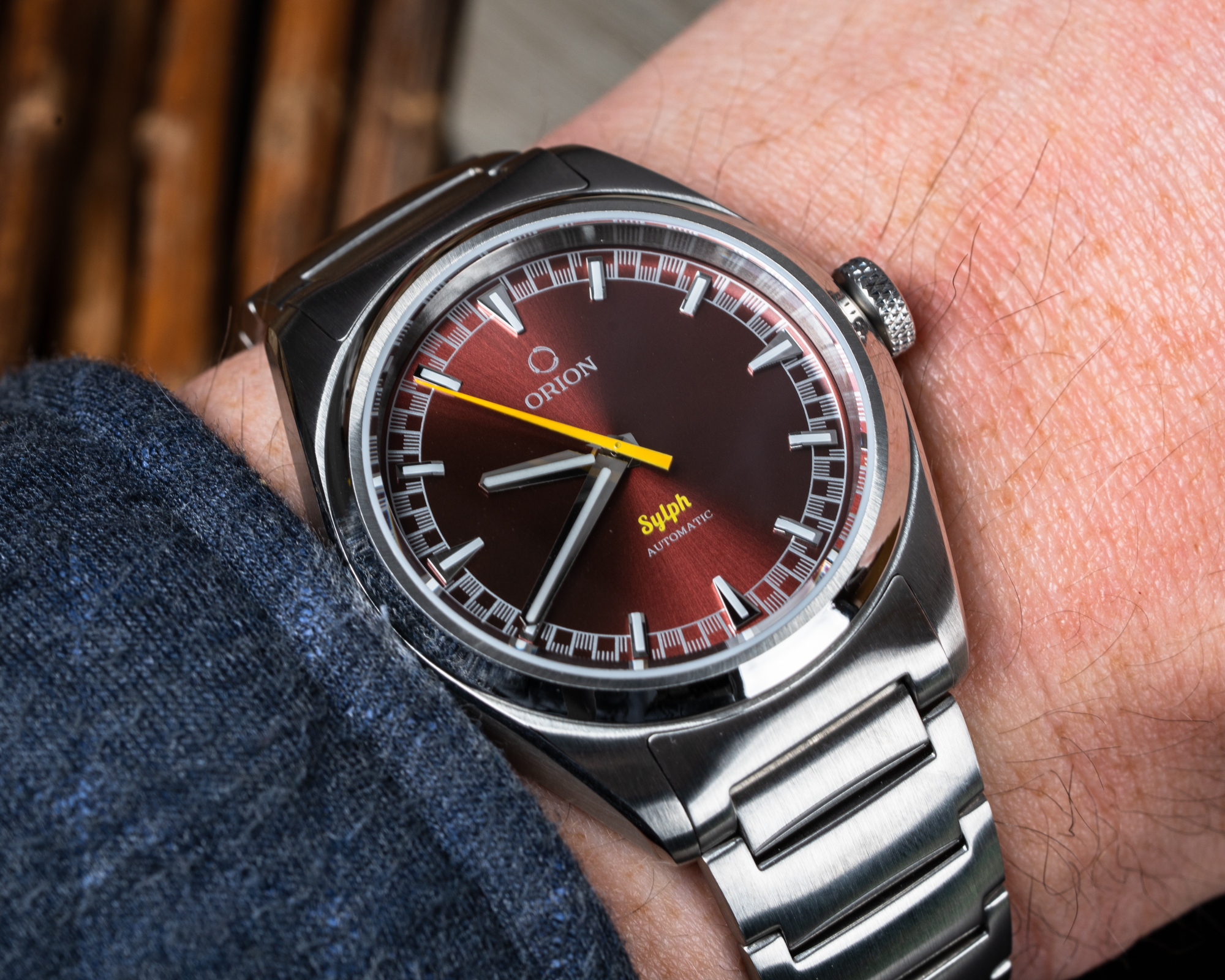
The Orion Sylph is offered in three dial variants. The new model line brings the original burgundy dial forward and adds a black mother-of-pearl and a graphite dial. Each dial gets its own contrasting pop of color for the seconds hand: yellow for the burgundy, teal for the mother-of-pearl, and orange for the graphite. When Orion debuted the original Sylph in 2018, it couched it as a “rally-style” watch. That suggestion hasn’t been made of the new models, but the rally-style minute track remains, and the applied, lumed indices are sharper than ever. They’re complemented by the obelisk-style hands (borrowed from the Calamity and new to the Hellcat platform. Bringing this hand style together with the angular applied indices and the rally track gives the Sylph a much sportier look than its Hellcat siblings. All three models share blue BGW9-lumed indices and hands, and the lume shines evenly but could use a bump in brightness, which is just adequate.
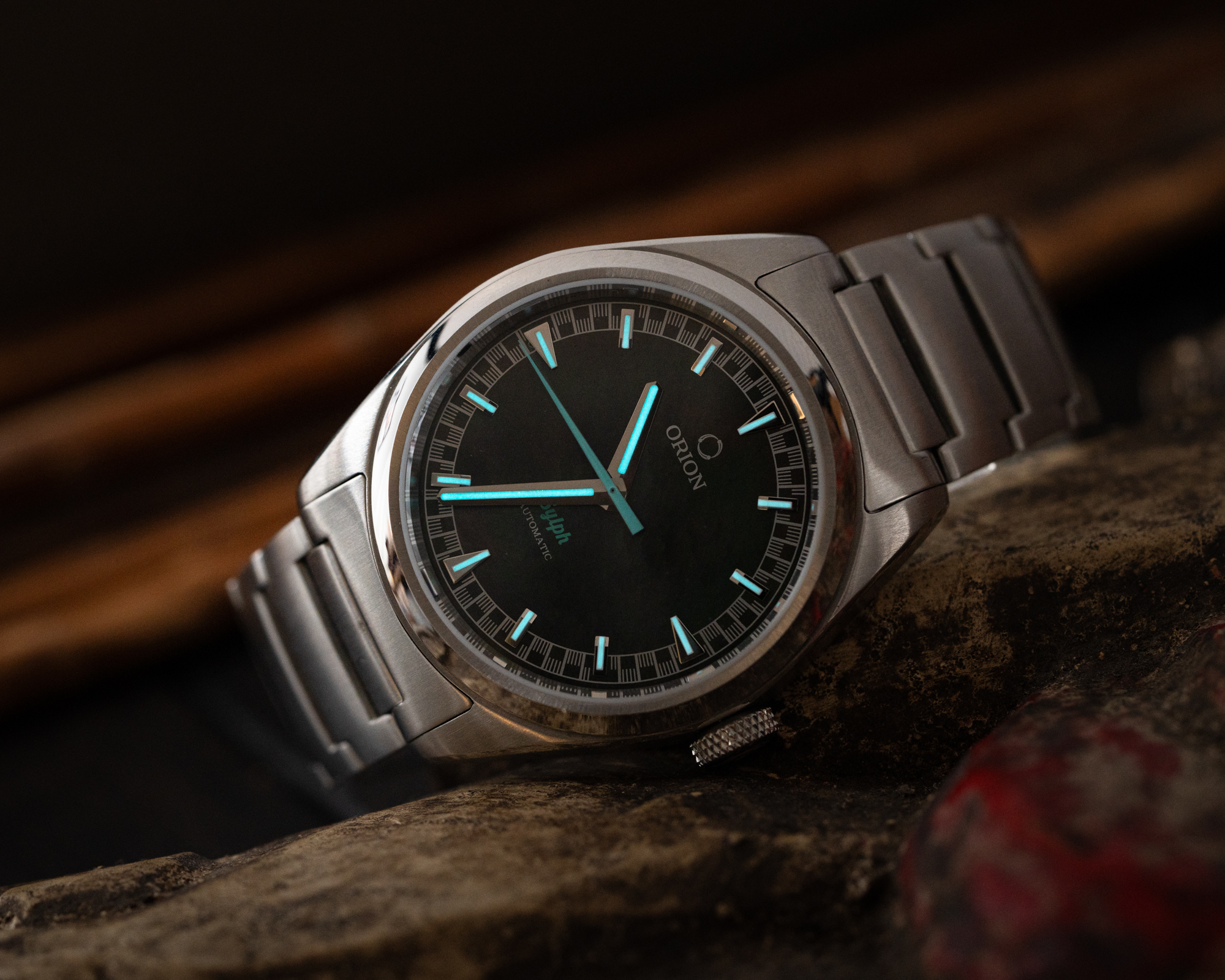
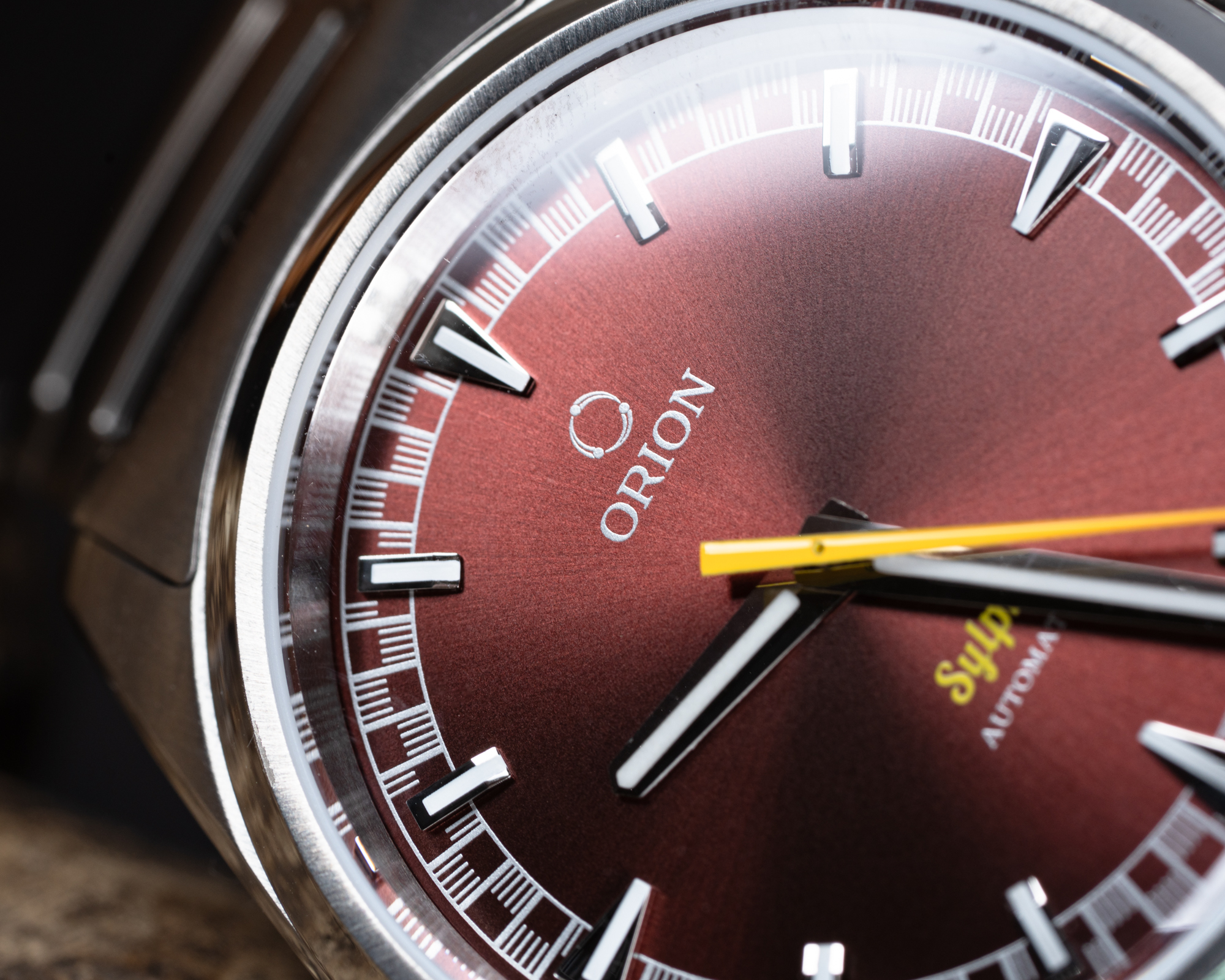
Shared details aside, these are three entirely different dials. While I didn’t get a chance to handle the graphite, it’s decidedly the most sedate of the bunch. While the radiant sunburst of the burgundy and the graphite is the same, the vibe is not. The burgundy and gold combo (which, as a Washington, DC, native, will always remind me of the Commanders) is almost regal in its vibrancy, positioning itself as the slightly bolder, yet less edgy counterpoint to the sleek, dark graphite. And then there’s the magical black mother-of-pearl. Constantly shifting, with a thousand different faces, the dark iridescence of the black MOP dial, for me, blows the other two out of the water. The teal hand provides contrast while also picking up some similar tones in the dial. Of course, every MOP dial is different, but presumably, the composition of each is equally captivating.
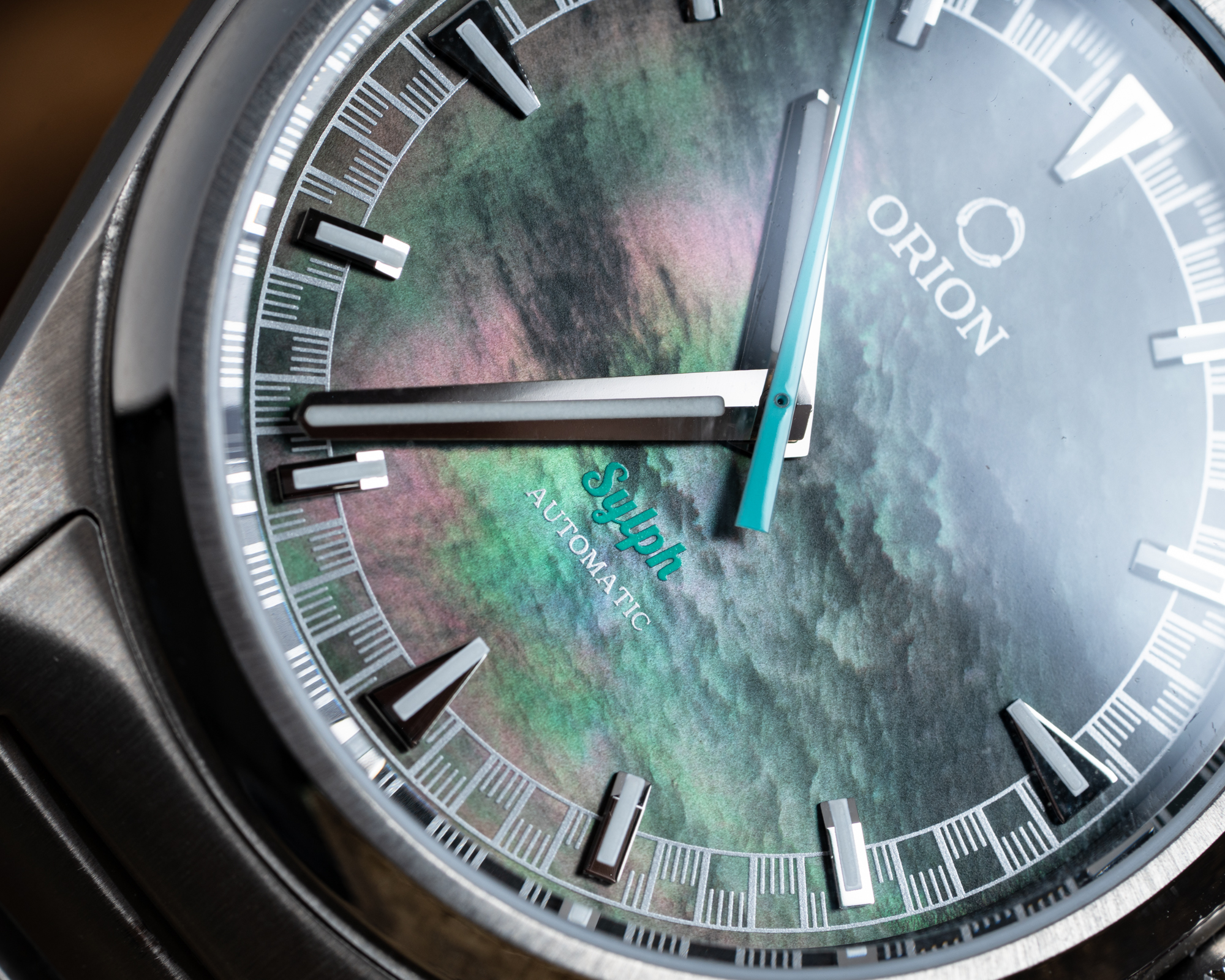
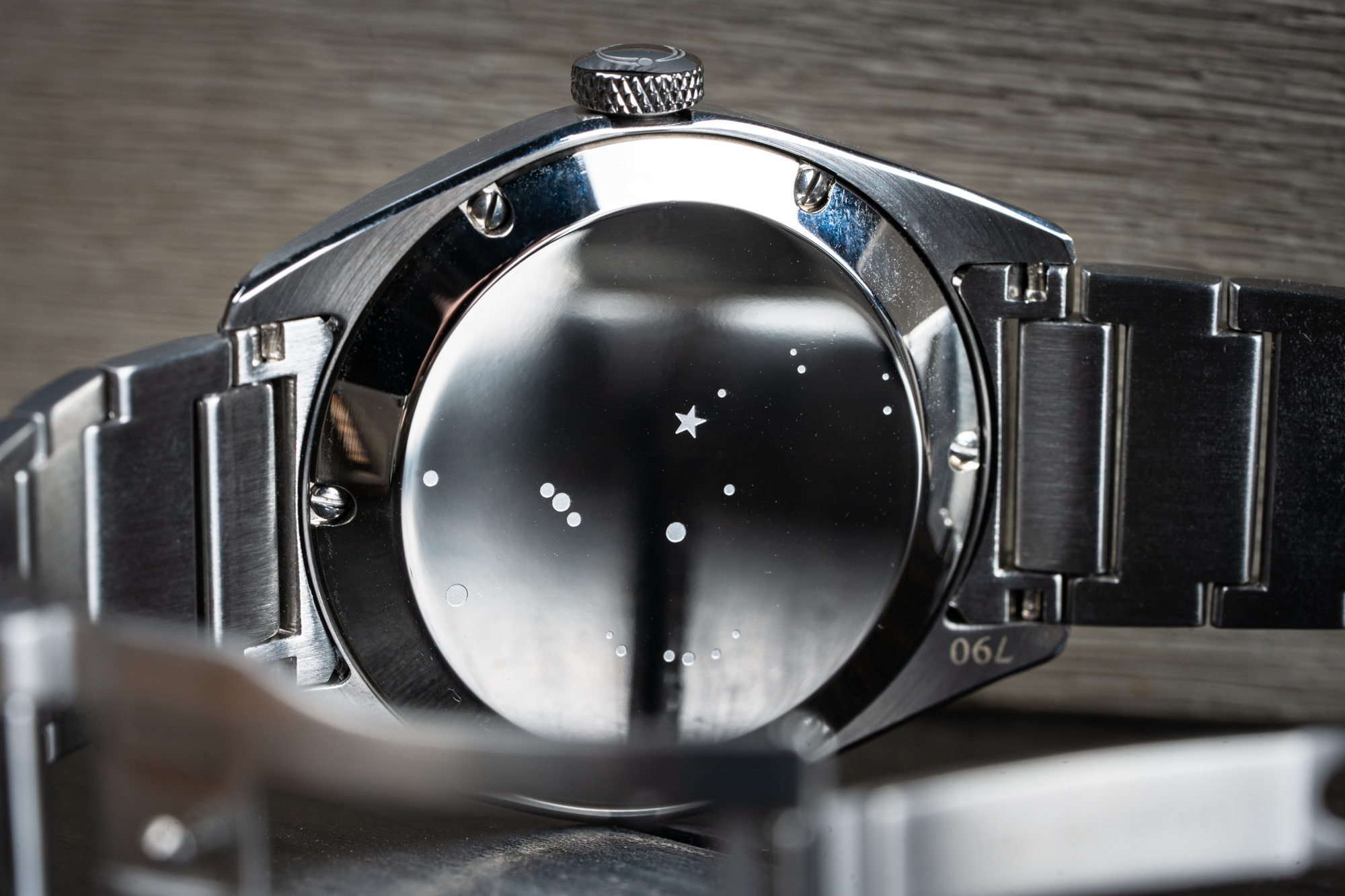
On the polished caseback, Orion has placed a rendering of its namesake constellation, with Betelgeuse represented by a star. Under the caseback is the Japanese automatic Miyota 9039. This proper no-date caliber is the movement of choice for affordable brands, and in my time with the watches, I found no timing issues. The movement runs at 28,800vph with a power reserve of 42 hours.
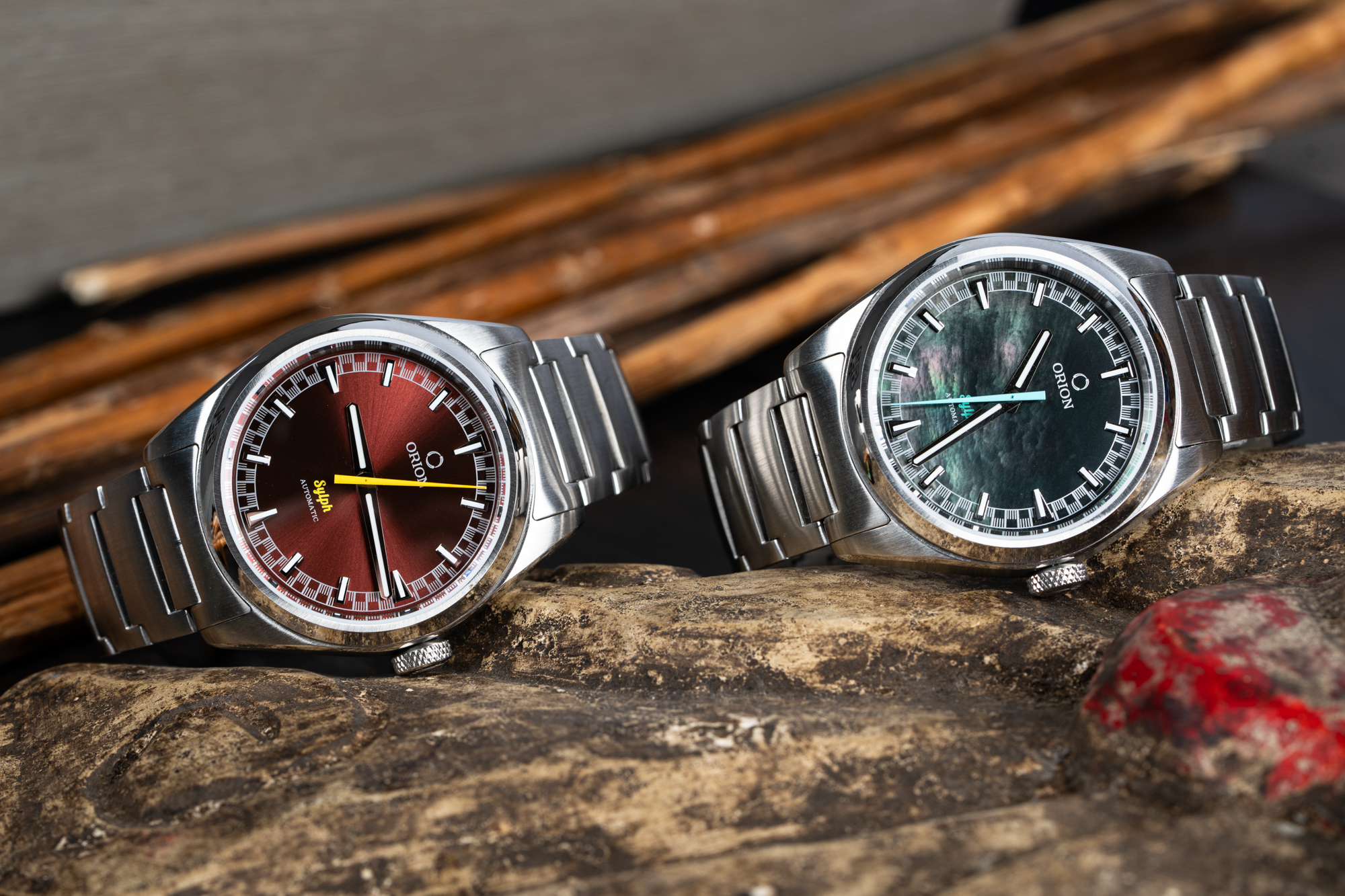
When the Orion Sylph first debuted on its old platform, you could see the buds of an idea that wasn’t quite refined enough. Reinventing the model with the Hellcat platform and expanding it to include the graphite and black mother-of-pearl dials elevates it to where it was always supposed to be. While the dazzling MOP dial is the clear winner for me, the burgundy and graphite options mean that there’s something for everyone. The Orion Sylph is priced at $725 USD in graphite or burgundy and $835 USD in black mother-of-pearl. For more information, please visit the Orion website.

